This article is for people interested in plant growth and willing to significantly improve their harvests. Discover why opting for a greenhouse might be your best investment and how to take all the benefits from it by monitoring temperature with a smart Bluetooth sensor.
What is a greenhouse and what are its uses?
A greenhouse is an old invention used to improve plants growth performances and to extend harvest season.
When was the first ever greenhouse built?
Charles Lucien Bonaparte is known as the creator of the first greenhouse. It was in the 1800’s, even if the idea of growing plants in controlled environments has existed since Roman times. Later, during the industrial revolution in the 1900’s, glass prices dropped consequently, making greenhouses more accessible.
What is the greenhouse principle?
Greenhouses are always made of transparent materials such as glass or plastic. The sunlight can easily pass through, because transparent surfaces are good at conducting light. When the sunlight meets an opaque surface, the ground or a plant, it is transformed into heat. Because the glass and plastic are bad at conducting heat, it remains inside, keeping the temperature higher than outside.
Greenhouses are often mistaken for the greenhouse effect. The reason for this is that it is the same phenomenon that is responsible for global warming. The atmosphere is acting as the glass, and greenhouse gases as the opaque surface that convert light into heat. Sunlight gets easily through the ozone layer, hits the carbon dioxide molecules that tend to make more heat than other gases, and heats up the surrounding atmosphere.
Is greenhouse monitoring for me?
If you’re interested even just a little in gardening you should consider acquiring a greenhouse and a few sensors to monitor it.
Do I need a greenhouse?
First things first, nowadays it is more and more common to have a greenhouse somewhere in your garden or even on the balcony. There are plenty of choices in terms of size and prices making them really accessible.
In the Covid-19 era, people spend more time at home, and discover new hobbies. Growing plants has been in a strong position and opting for a greenhouse is a good solution. It makes the growing faster, the harvesting season longer and the growing environment easier to control.
What are the benefits of monitoring my greenhouse?
There are few parameters to consider when growing plants: light, temperature and humidity are good examples. Monitoring the environment may help to increase the harvest by up to 50%. Thanks to new technologies such as Bluetooth sensor nodes it is more convenient and affordable than ever to monitor the greenhouse. It will also save your time, knowing exactly when to water your plants, when to ventilate the greenhouse or when to heat it up to protect them.
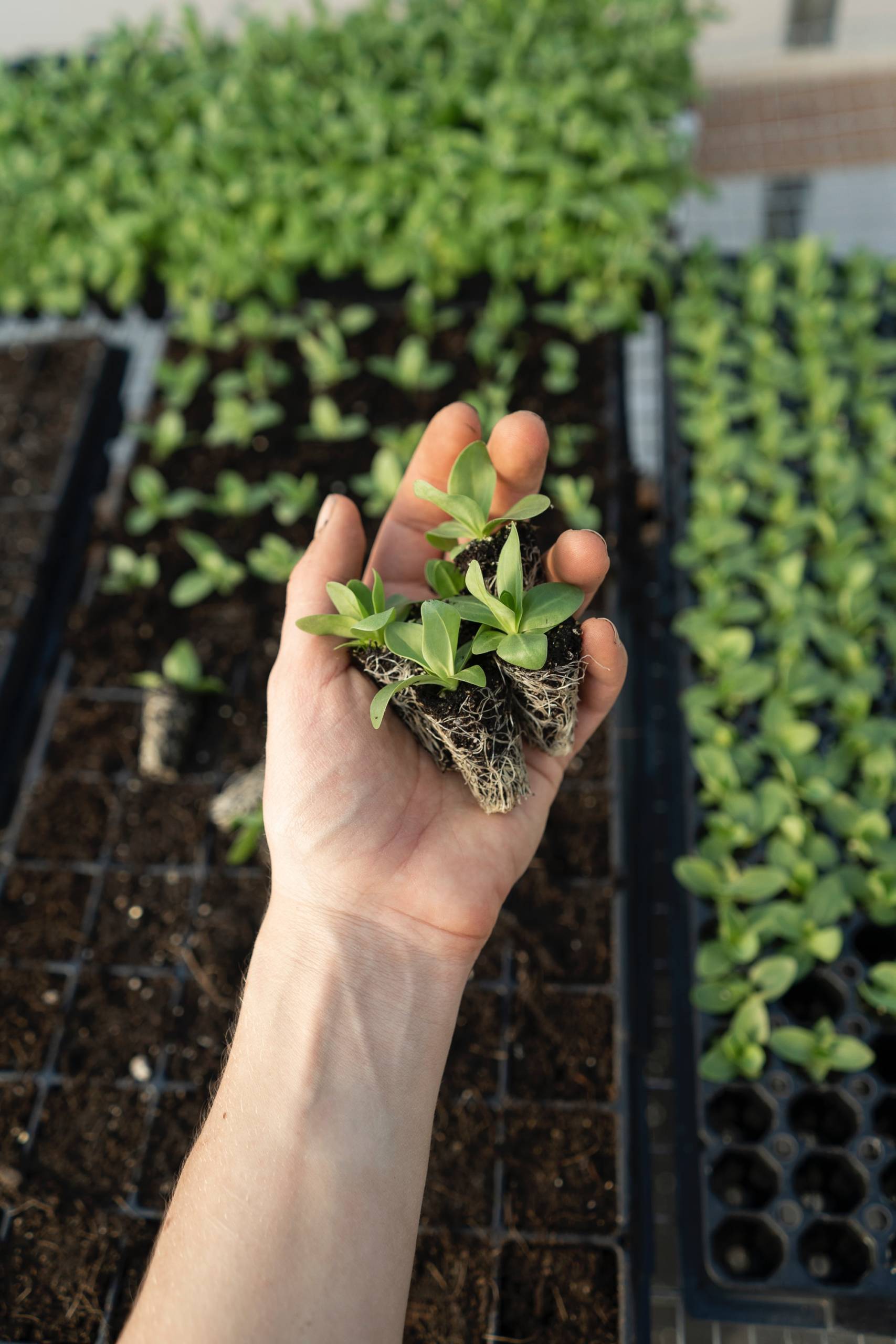
How do I keep my plants from freezing?
Protecting plants from freezing is essential, one cold spring night with temperature getting below zero degree celsius might be enough for ruining all the season’s harvest.
Monitoring temperature in the wine industry
Plants have different degrees of resistance to cold. Some of them need heat whereas others prefer colder environments. However, there is no plant that would enjoy negative temperatures. In the wine industry for example, grapes are monitored to protect them during the cold spring nights. Winegrowers have systems to heat up the plants and sensors to tell them when to put them on. If the plants freeze at spring time, it will affect very consequently that year’s wine production.
Protecting plants from frost damage
Same thing can happen at home, jeopardizing your beloved plants. Monitoring the greenhouse is the best way to prevent this from happening. Modern sensor applications have built-in alarms that inform you on your phone when the temperature is no longer suitable in the greenhouse.
Optimizing and facilitating plants growth
As said above, not all the plants need the same amount of heat/sunlight to grow. Also the temperature inside of a greenhouse may vary from one place to another. It is therefore important to know what are the “hot places” and the colder ones to set your plants accordingly. It might be also interesting to measure sunlight exposition hours per day.
Tech tools to boost your garden
The easiest way to know where the different zones are is to set several thermometers or sensors inside the greenhouse and monitoring them during the day. Differences might be quite small, so it is preferable to use a sensor instead of a thermometer for higher precision.
The RuuviTag smart Bluetooth sensor as the best solution for greenhouse temperature control
One way to monitor temperature is obviously to have conventional thermometers. However, they are not really convenient to monitor because you need to go next to them everytime.
Why to use a smart Bluetooth sensor instead of a regular thermometer?
Another way is to go for the RuuviTag, a smart Bluetooth sensor node that is water resistant (IP67), making it perfect for outdoors. It can measure temperature within a wide range from -40°C to +85°C. It will gather data directly to your phone, drawing graphs in the free mobile app. The RuuviTag is also very affordable, even when buying many of them for different areas of the greenhouse. The app supports an unlimited amount of sensors and the same sensor can be monitored simultaneously by several devices.
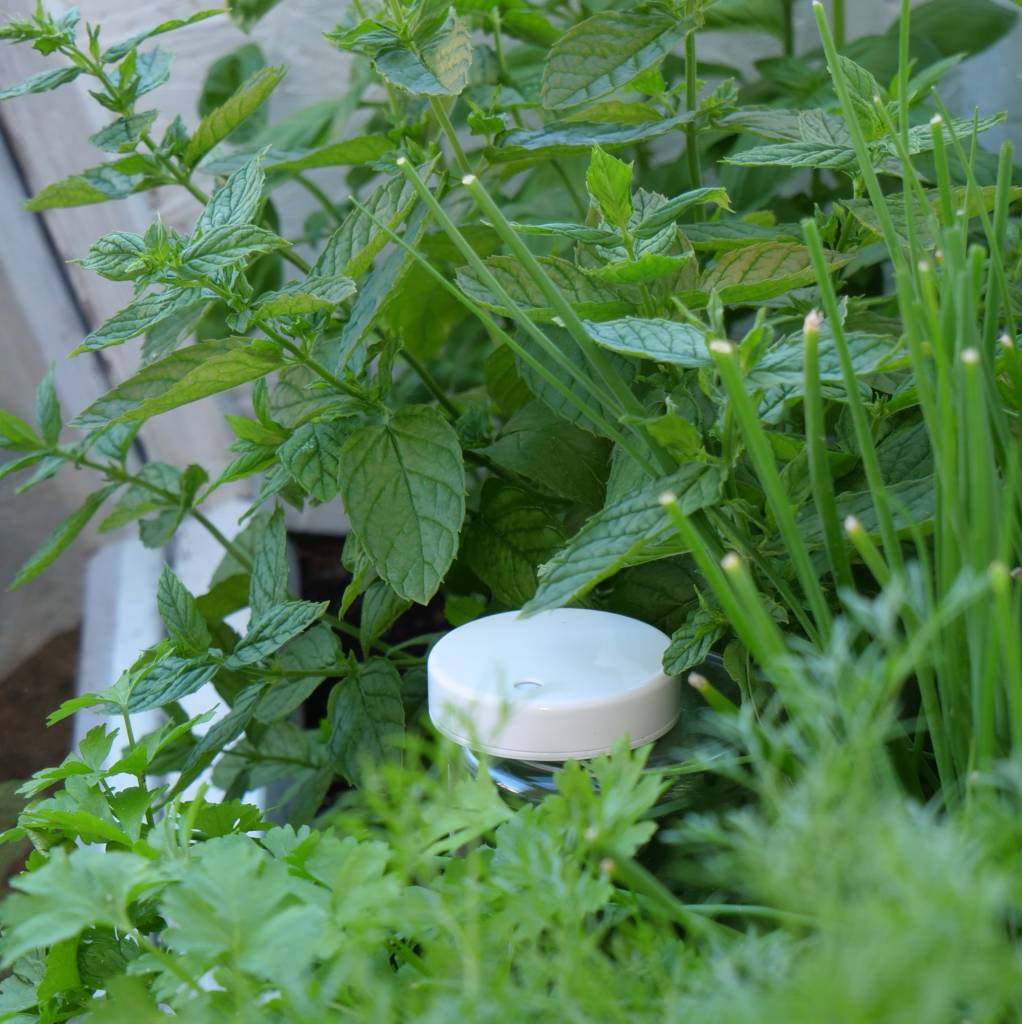
Conclusion
Monitoring temperature in the greenhouse is the first step towards greenhouse automation. It makes your life easier and your harvest greater. However, temperature is not the only important parameter to track. Discover how humidity also affects growing performances and how the RuuviTag is also the solution there!
Buy a Smart Sensor to Your Greenhouse Now
Ruuvi is an easy way to measure your greenhouse’s conditions all year round. Secure your yields with greenhouse optimization!
39,90€
Ruuvi is based in Finland. If you’re an EU consumer, VAT is included. If you’re a non-EU customer, you don't pay VAT. If you're an EU business, insert your VAT ID at checkout.
In stock
RuuviTag Sensor (4in1)
| 5 star | 92% | |
| 4 star | 8% | |
| 3 star | 0% | |
| 2 star | 0% | |
| 1 star | 0% |
RuuviTag Sensor (4in1)
| Quantity | Unit Price(€) |
|---|---|
| 1 | 39,90 |
| 2 | 37,40 |
| 3-5 | 36,90 |
| 6-8 | 35,90 |
| 9-12 | 34,90 |
| 13-25 | 33,90 |
| 26-99 | 32,90 |
Are you looking for bigger quantities? Contact us for pricing.
FAQ
What is the best temperature for a greenhouse?
Most common crops thrive in temperatures between 18 °C and 25 °C.
How to monitor temperature in a greenhouse?
Small, inexpensive wireless sensors are the best tools to monitor any greenhouse’s environmental conditions.
Why is greenhouse temperature monitoring important?
Most crops are vulnerable against temperature fluctuations. For example frost can harm or even kill crops. Monitoring the temperature enables for quick measures to be made once an improper temperature is being recorded.
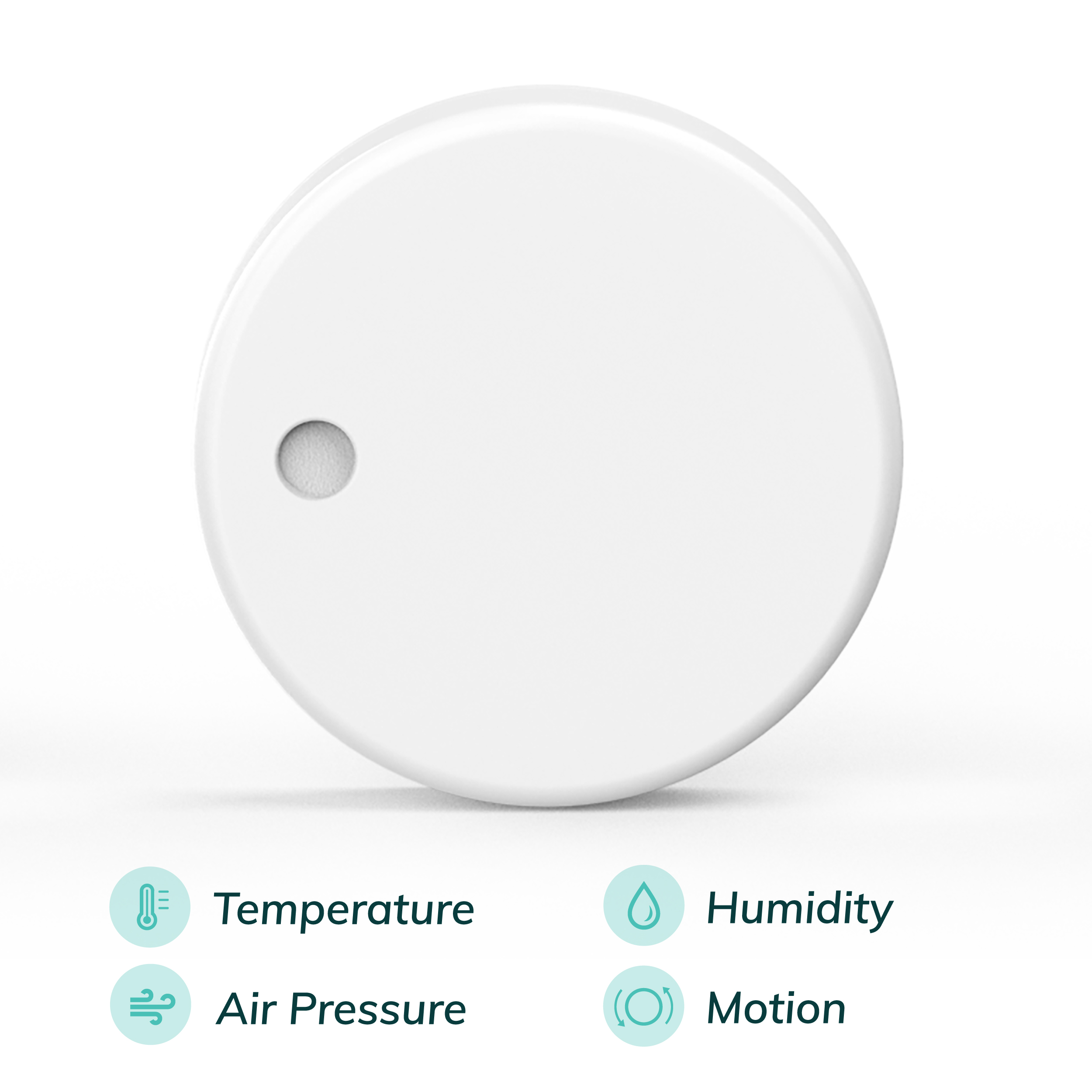
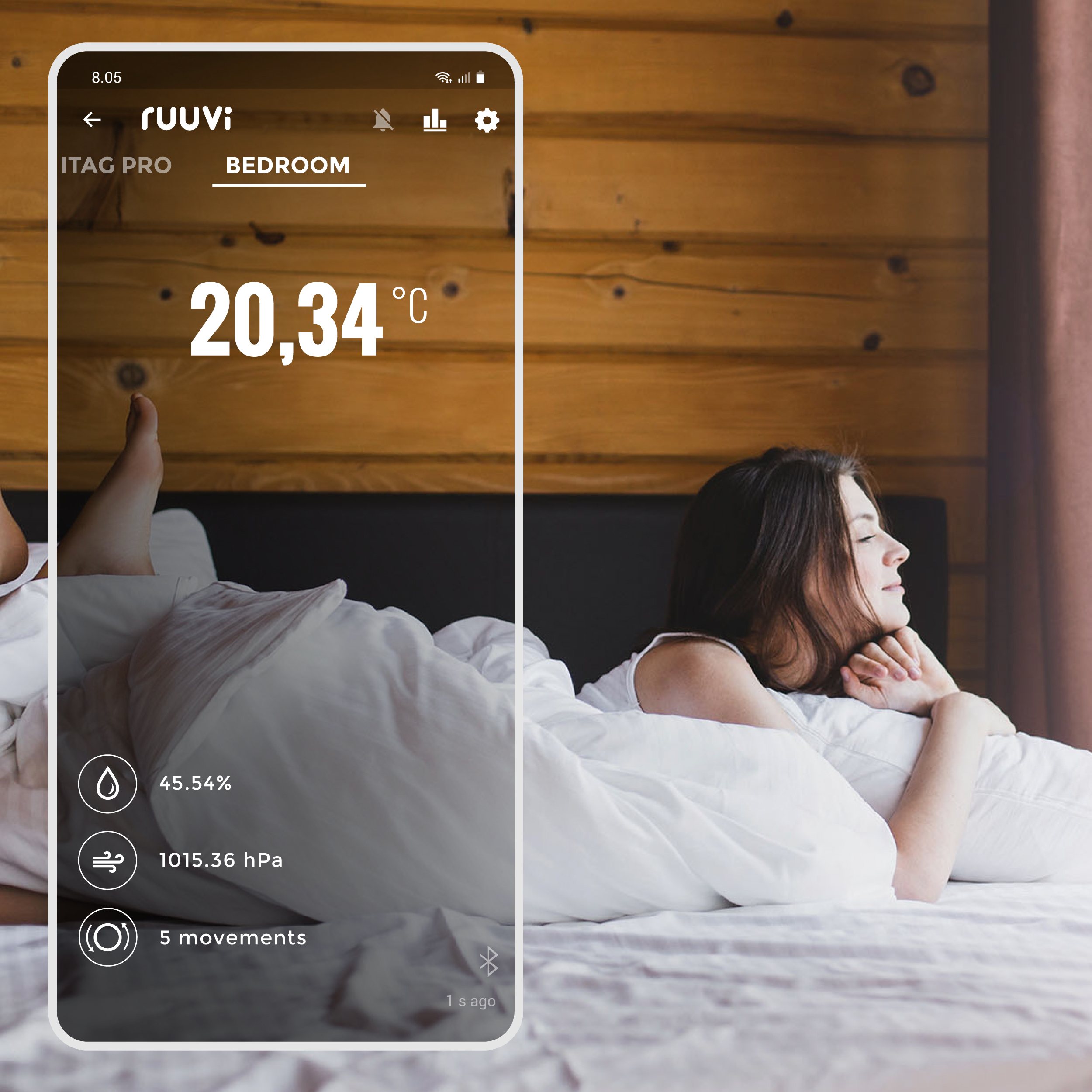
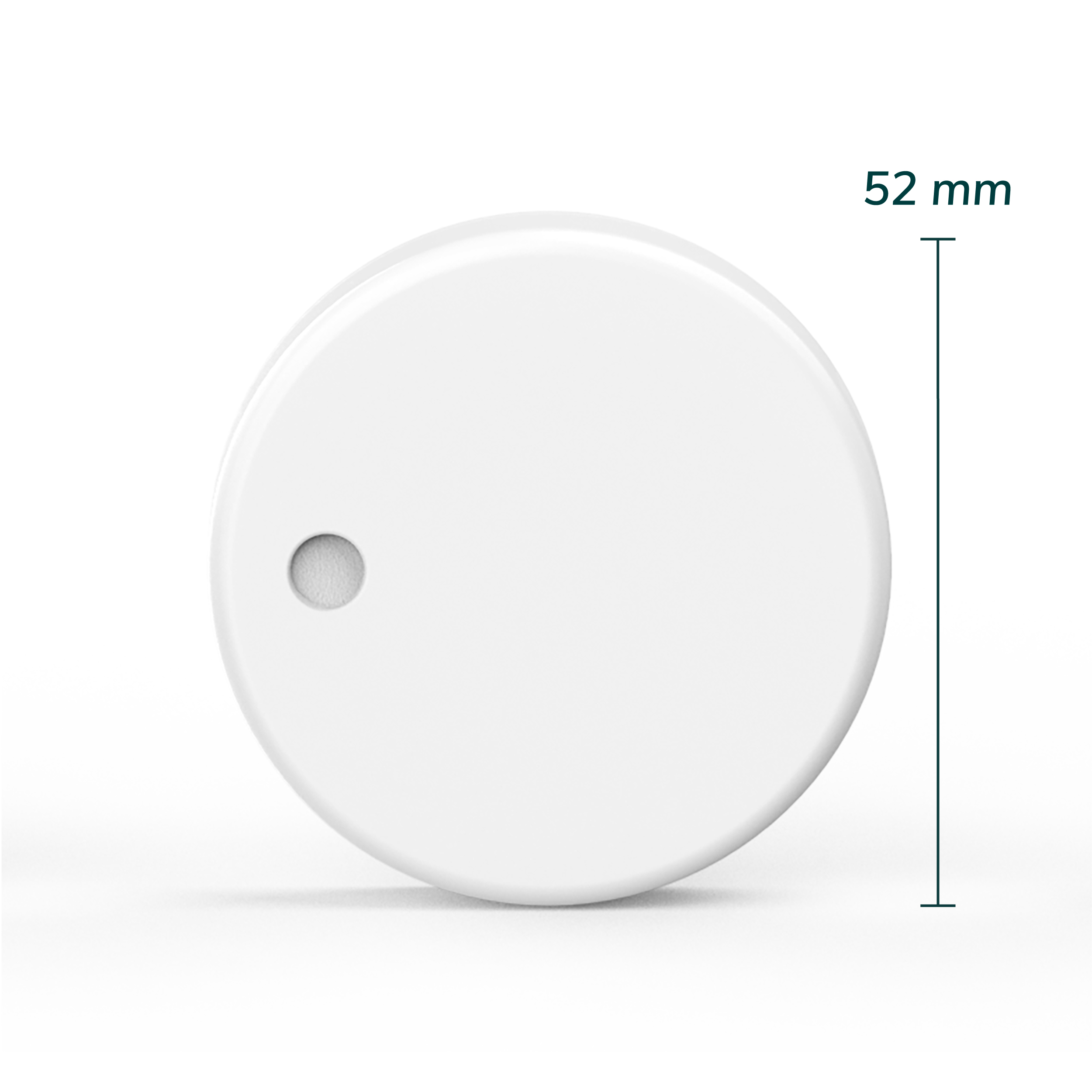
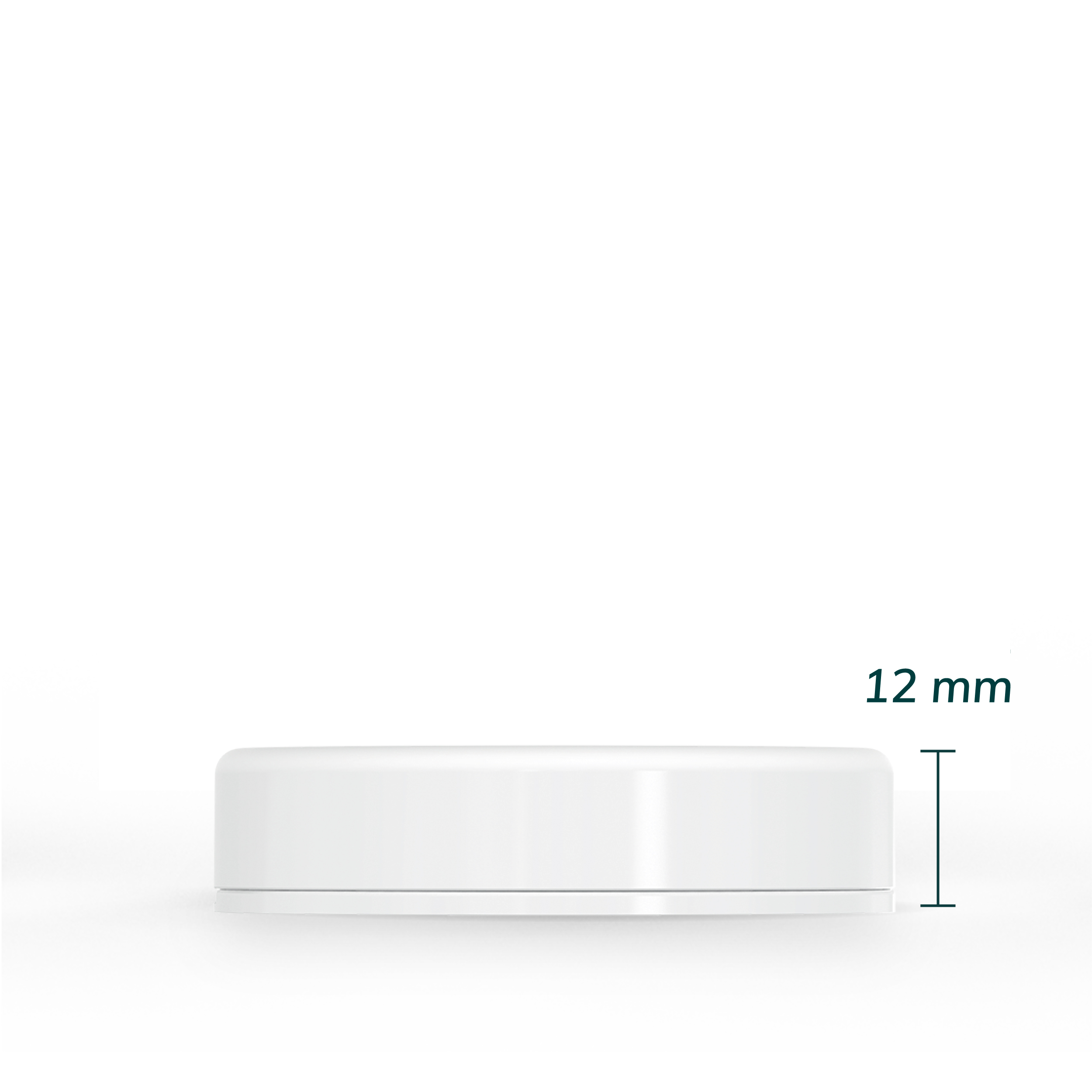
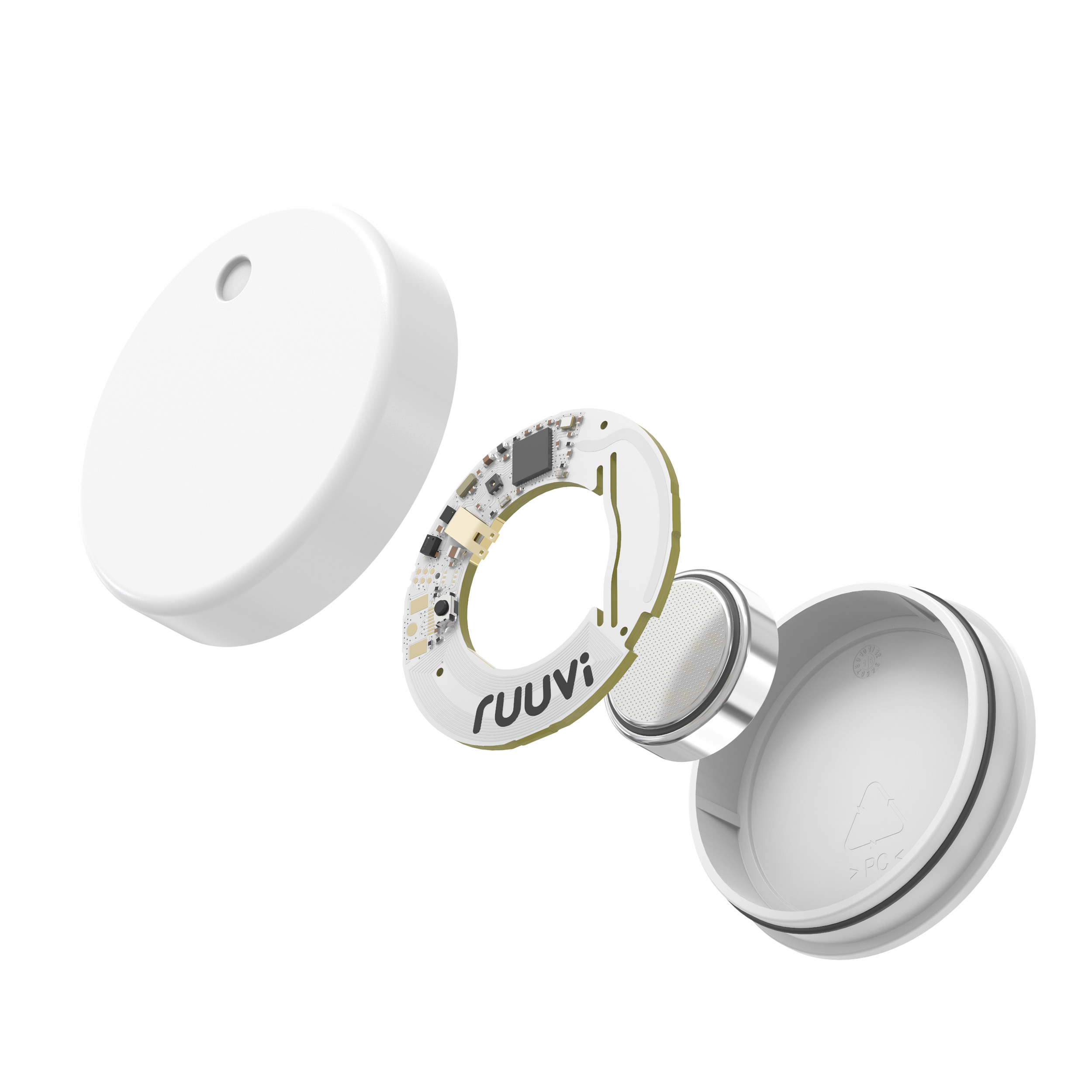
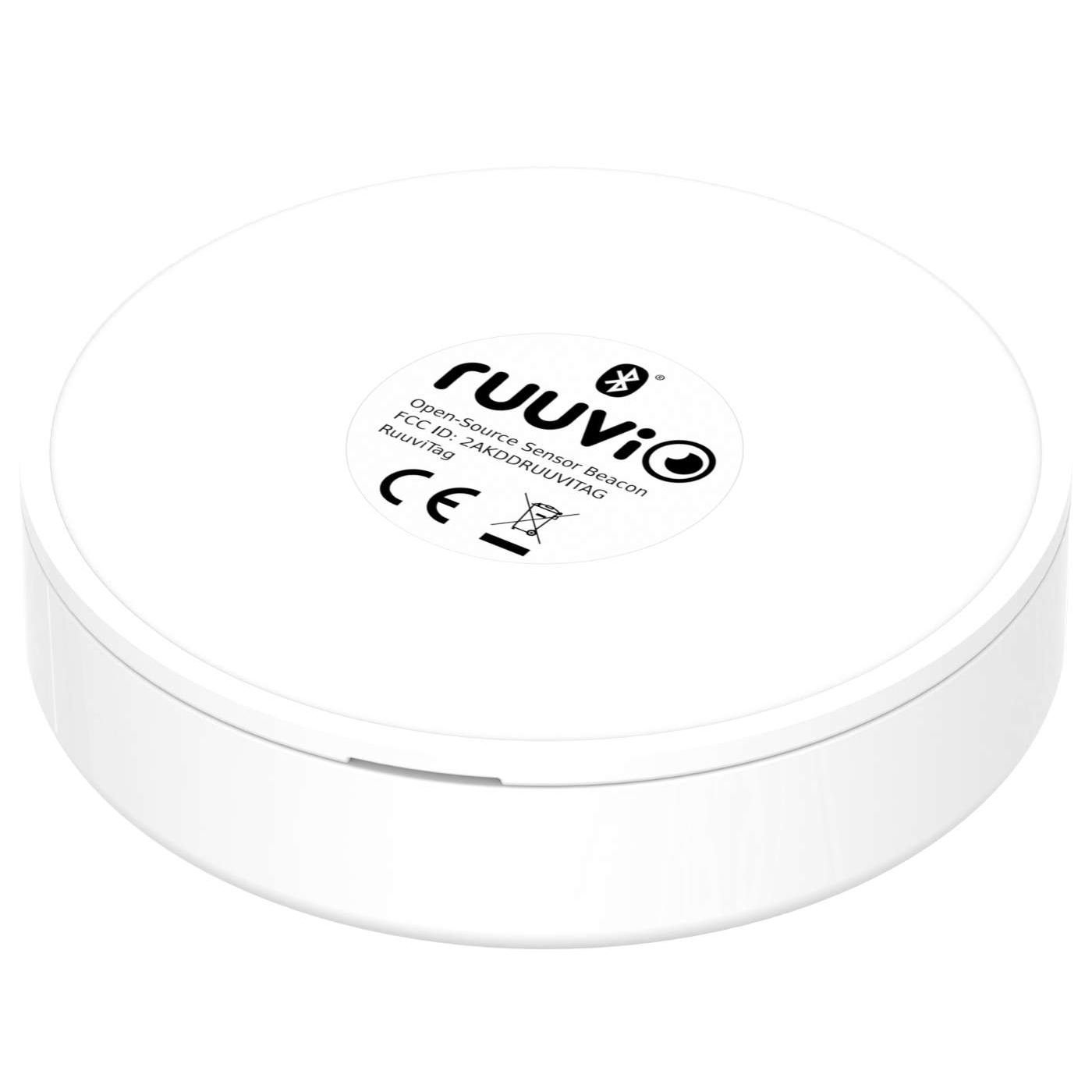
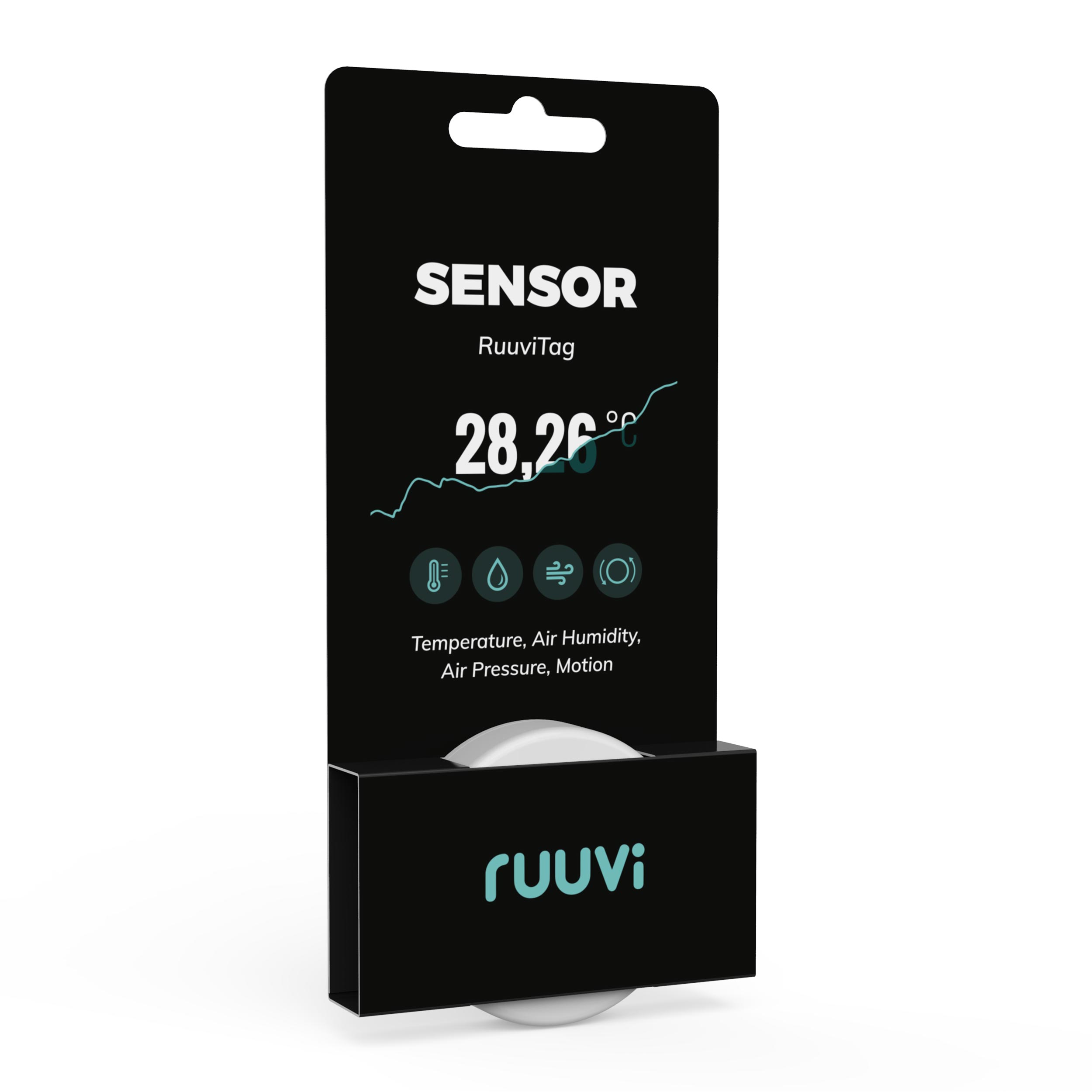
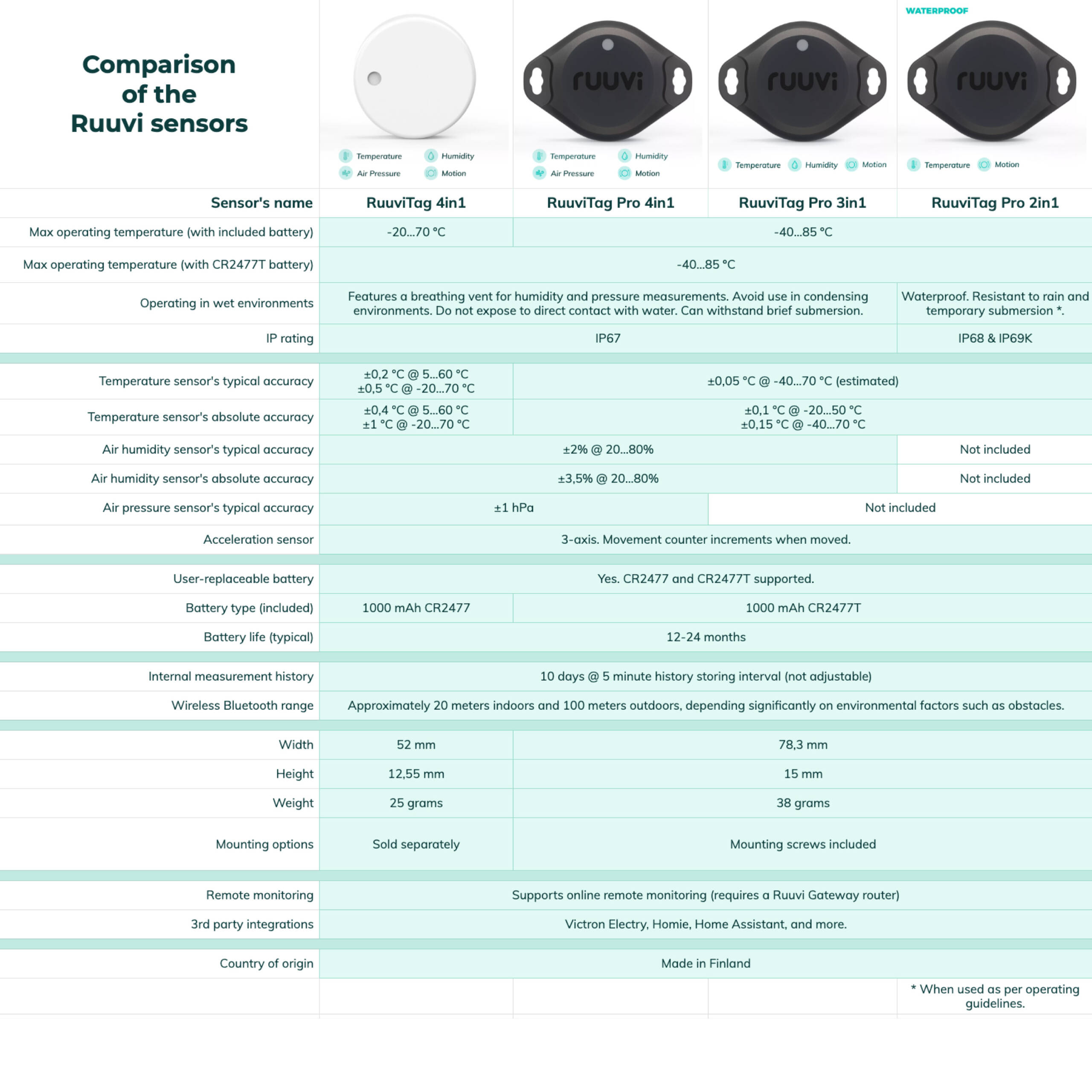
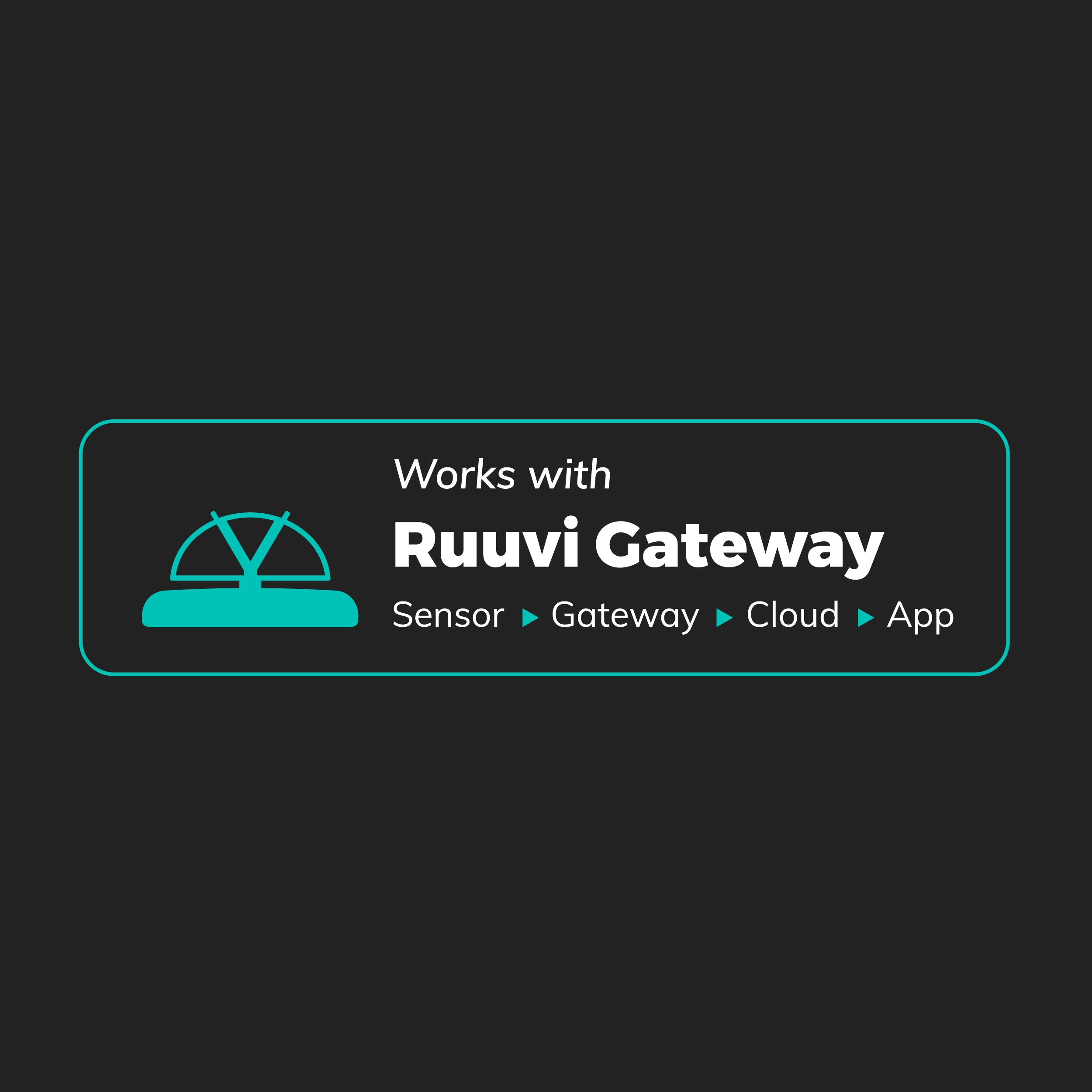
Easy to use!
I have been a loyal user of the RUUVI products for years, and I couldn’t be happier with their quality and performance. Recently, when I faced an issue on my last shopping, the company’s support team went above and beyond to help me. Their dedication and personal follow-up truly impressed me and reinforced why I trust and recommend RUUVI so highly. If you want a reliable and innovative product, look no further than RUUVI. Highly recommended!
A tremendous little sensor that just works. The data it provides is consistently reliable, and the battery life has been excellent. I now have several of them dotted around the house — and also in the motorhome — and they’ve all been rock-solid. Whether I’m checking temperature, humidity, or movement, they report instantly and have never let me down. A simple, dependable sensor that does exactly what it promises.